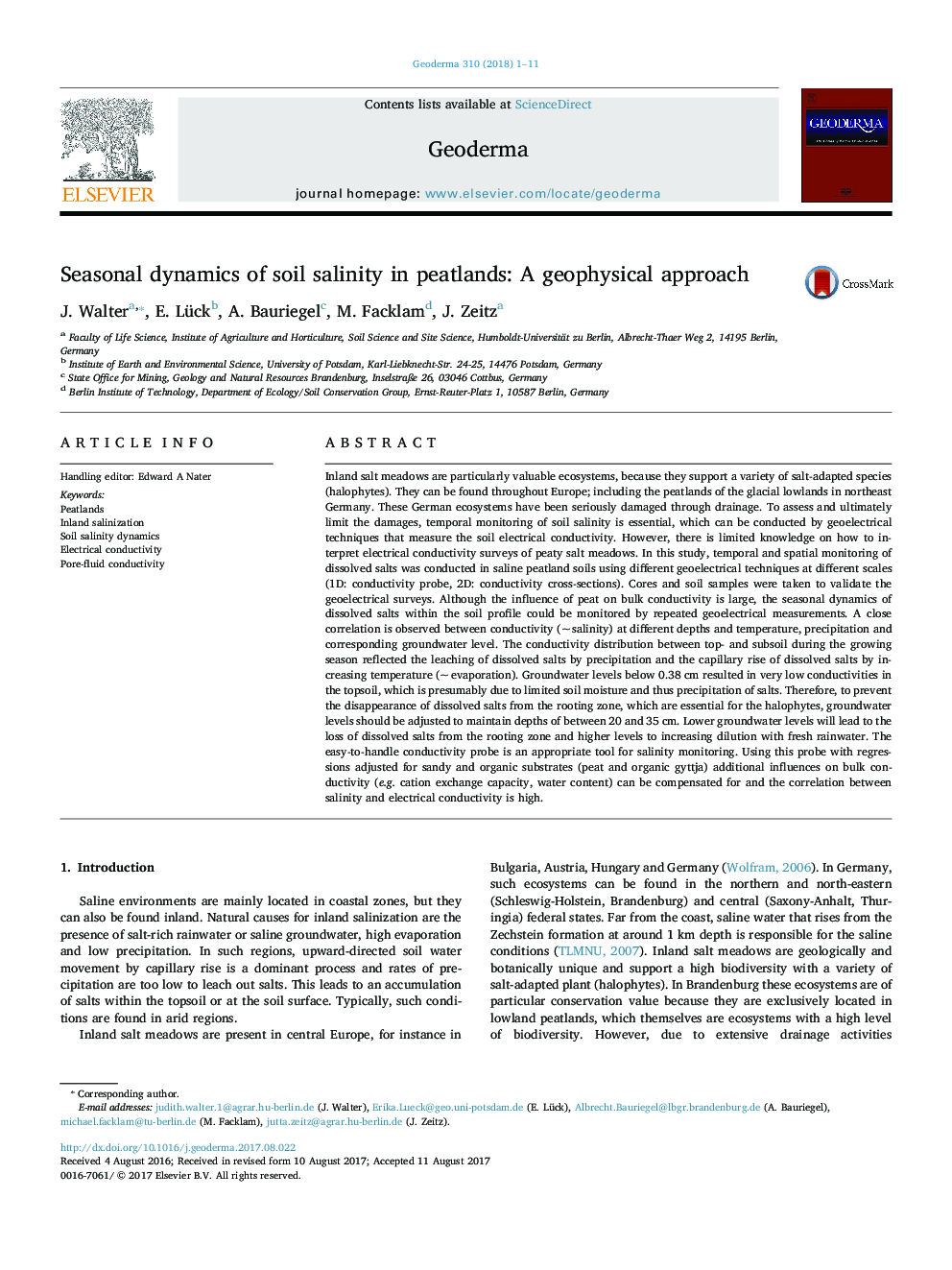| کد مقاله | کد نشریه | سال انتشار | مقاله انگلیسی | نسخه تمام متن |
|---|---|---|---|---|
| 5770354 | 1629407 | 2018 | 11 صفحه PDF | دانلود رایگان |
عنوان انگلیسی مقاله ISI
Seasonal dynamics of soil salinity in peatlands: A geophysical approach
ترجمه فارسی عنوان
پویایی فصلی شوری خاک در تالاب ها: رویکرد ژئوفیزیکی
دانلود مقاله + سفارش ترجمه
دانلود مقاله ISI انگلیسی
رایگان برای ایرانیان
کلمات کلیدی
بوته ها، شوری درونی، پویایی شوری خاک، رسانایی الکتریکی، هدایت مایع پورت،
موضوعات مرتبط
مهندسی و علوم پایه
علوم زمین و سیارات
فرآیندهای سطح زمین
چکیده انگلیسی
Inland salt meadows are particularly valuable ecosystems, because they support a variety of salt-adapted species (halophytes). They can be found throughout Europe; including the peatlands of the glacial lowlands in northeast Germany. These German ecosystems have been seriously damaged through drainage. To assess and ultimately limit the damages, temporal monitoring of soil salinity is essential, which can be conducted by geoelectrical techniques that measure the soil electrical conductivity. However, there is limited knowledge on how to interpret electrical conductivity surveys of peaty salt meadows. In this study, temporal and spatial monitoring of dissolved salts was conducted in saline peatland soils using different geoelectrical techniques at different scales (1D: conductivity probe, 2D: conductivity cross-sections). Cores and soil samples were taken to validate the geoelectrical surveys. Although the influence of peat on bulk conductivity is large, the seasonal dynamics of dissolved salts within the soil profile could be monitored by repeated geoelectrical measurements. A close correlation is observed between conductivity (~Â salinity) at different depths and temperature, precipitation and corresponding groundwater level. The conductivity distribution between top- and subsoil during the growing season reflected the leaching of dissolved salts by precipitation and the capillary rise of dissolved salts by increasing temperature (~Â evaporation). Groundwater levels below 0.38Â cm resulted in very low conductivities in the topsoil, which is presumably due to limited soil moisture and thus precipitation of salts. Therefore, to prevent the disappearance of dissolved salts from the rooting zone, which are essential for the halophytes, groundwater levels should be adjusted to maintain depths of between 20 and 35Â cm. Lower groundwater levels will lead to the loss of dissolved salts from the rooting zone and higher levels to increasing dilution with fresh rainwater. The easy-to-handle conductivity probe is an appropriate tool for salinity monitoring. Using this probe with regressions adjusted for sandy and organic substrates (peat and organic gyttja) additional influences on bulk conductivity (e.g. cation exchange capacity, water content) can be compensated for and the correlation between salinity and electrical conductivity is high.
ناشر
Database: Elsevier - ScienceDirect (ساینس دایرکت)
Journal: Geoderma - Volume 310, 15 January 2018, Pages 1-11
Journal: Geoderma - Volume 310, 15 January 2018, Pages 1-11
نویسندگان
J. Walter, E. Lück, A. Bauriegel, M. Facklam, J. Zeitz,
